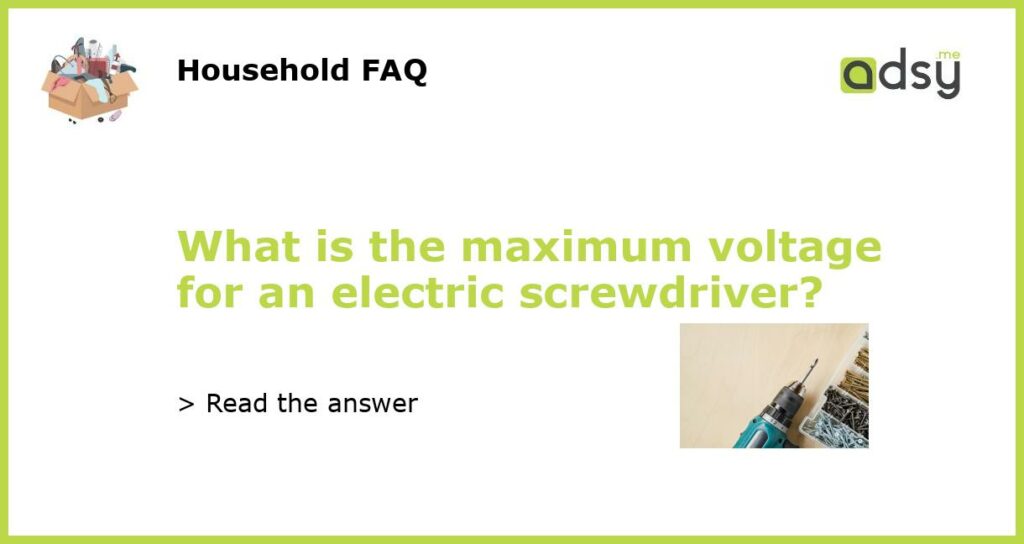Electric Screwdriver: Understanding the Maximum Voltage
If you’re working on DIY projects that require the use of an electric screwdriver, it’s essential to understand the maximum voltage it can handle for your safety and the lifespan of the tool. The maximum voltage will determine the tool’s power output and is an essential factor in choosing the right one for the job.
What is the Maximum Voltage for an Electric Screwdriver?
The maximum voltage for an electric screwdriver ranges from 3.6V to 24V. For household or light-duty tasks, a lower voltage range of 3.6V to 6V might suffice. However, for heavy-duty tasks like drilling through thick wood boards or mending hardwood floors, a higher voltage range of 12V to 24V might be more suitable.
Why is the Maximum Voltage Important?
The maximum voltage is crucial as it affects the tool’s power output and determines the type of tasks it can handle. An electric screwdriver with a higher voltage typically has more torque and can drill through thicker materials without overheating. However, it’s crucial to keep safety in mind when operating a high-voltage tool and use it appropriately to avoid injuries.
Factors to Consider Before Choosing an Electric Screwdriver
Before choosing an electric screwdriver, you must consider the type of tasks you’ll use it for, the size and design of the tool, and the maximum voltage it can handle. It’s also important to consider the brand’s reputation and reliability to ensure longevity and durability.
The maximum voltage is an essential factor to consider when choosing an electric screwdriver for your DIY projects. It determines the tool’s power output and suitability for different tasks. By understanding the maximum voltage and other relevant factors, you can choose the right tool for your DIY projects that will give you optimal results while ensuring safety and longevity.






